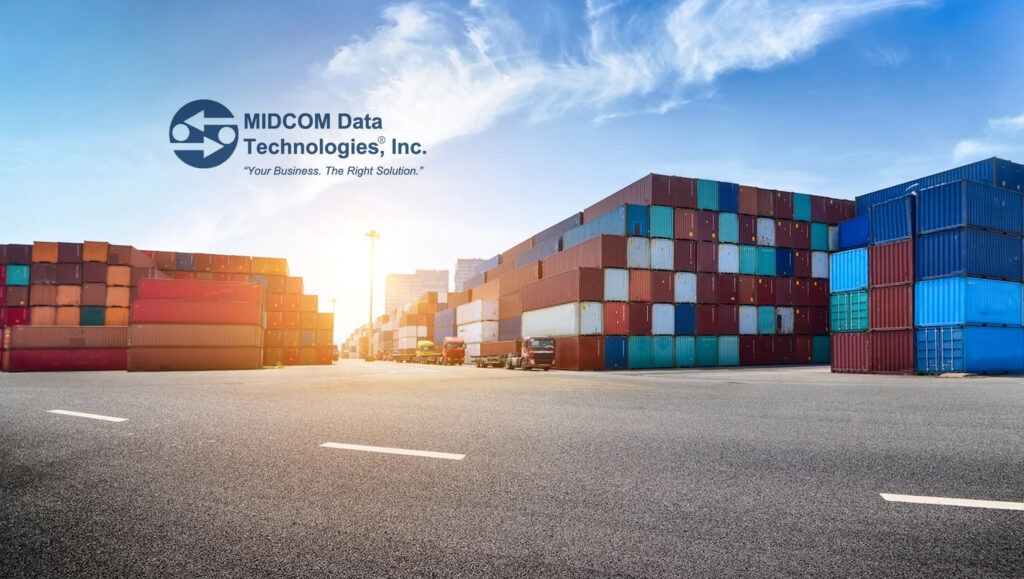2020 was a pivotal year for many industries. The implications of the COVID-19 pandemic have altered consumer habits and how people do business around the world. One of the most heavily impacted industries is warehousing and logistics. The explosive demand for eCommerce coupled with labor shortages and antiquated infrastructure created novel challenges for the industry. Innovative businesses have been working on coming up with creative solutions to alleviate supply chain issues. One of the companies at the forefront of addressing these issues is MIDCOM Data Technologies. In the last two years, MIDCOM has been working to identify and address these challenges with newer technologies.
Read More: SalesTechStar Interview with Eric Christopher, CEO at Zylo
What’s Causing the Supply Chain Issues & How Are Companies Solving Them?
As businesses learn to coexist with supply chain issues, new technologies are emerging to alleviate the bottlenecks.
Although some of the more immediate effects of the pandemic have been alleviated, others will take time. Understanding that these external factors are here to stay, many businesses are taking charge and embracing innovative solutions to solve supply chain issues. Here are the top problems businesses are facing and some of the ways they are tackling them.
Controlling Freight Costs
Increasing freight costs was already an issue pre-pandemic. A massive labor shortage of truck drivers has only amplified the problem. Now, with the pressure of increasing gas prices, businesses are turning to electric vehicles to cut down on freight costs. GM is one of the leading car manufacturers that has made it easier for businesses to make the switch. Offering cash allowances and incentives to participating businesses, GM is taking charge of transitioning America’s freights into all-electric vehicles.
Pressures of Fast & Free Shipping
It’s no secret that large eCommerce companies such as Amazon have created and capitalized on the demand for faster and cheaper shipping. With dominance over the industry and the capability to meet consumer demands, Amazon has created an unrealistic standard for others to compete with. This so-called “Amazon effect” has put strains on the already struggling small businesses. To keep up with consumer expectations, eCommerce based companies like Ryder are racing to expand their distribution center portfolios in an effort to provide faster shipping to their customers. Regardless, unless substantial shifts take place in the industry or consumer expectations, these pressures will continue to be felt.
Read More: SalesTechStar Interview with Susan Cook, CEO at Zaloni
Keeping Up with Technology
Another pressure that is felt by all businesses is to keep up with technology. As the competition ramps up, newer technologies are helping businesses cut down on costs and speed up their operations. However, lack of access to these technologies is a major issue due to supply chain problems. MIDCOM Data Technologies, a leader in printer and barcode scanner repair and sales, has introduced innovative solutions to help its customers navigate these challenges. “Most of our customers in warehousing and logistics are feeling intense pressure to move items in and out of their warehouses,” says Ken Feinstein, VP of MIDCOM Data Technologies. “Since the pandemic began, we’ve found higher demand for our Printer Protection Plans and refurbished equipment including thermal label printers and barcode scanners to keep the critical technology that all warehouses need to eliminate downtime and bottlenecks in the picking and fulfillment processes”.
The Future of Supply Chain
Experts estimate that many of the factors contributing to supply chain disruptions will remain well into 2023. Supply chain management has become a focus point for many industries, transforming the way they do business in a short amount of time. As businesses learn to coexist with these challenges, new technologies are emerging to alleviate the bottlenecks. These innovations will continue to create shifts in the warehousing and logistics industry beyond the effects of the COVID-19 pandemic.






















